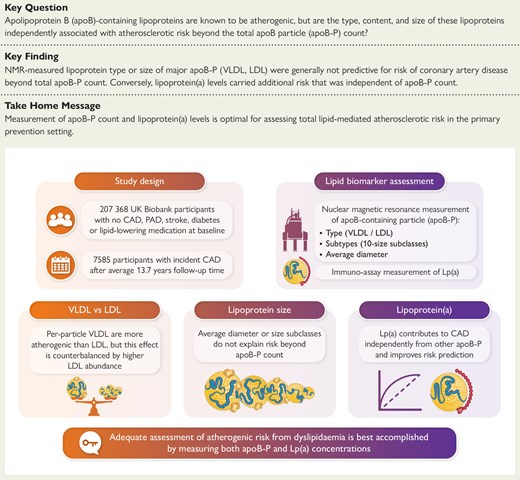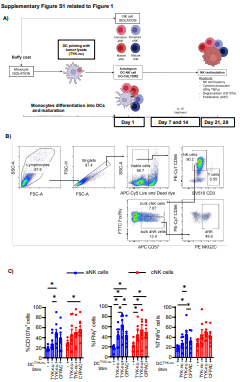2025-04-28 チャルマース工科大学
<関連情報>
- https://news.cision.com/chalmers/r/simple-test-could-better-predict-your-risk-of-heart-disease,c4140563
- https://academic.oup.com/eurheartj/advance-article/doi/10.1093/eurheartj/ehaf207/8118996
ApoB含有リポ蛋白:数、タイプ、サイズ、および冠動脈疾患のリスク ApoB-containing lipoproteins: count, type, size, and risk of coronary artery disease
Jakub Morze , Giorgio E M Melloni , Clemens Wittenbecher , Mika Ala-Korpela , Andrzej Rynkiewicz , Marta Guasch-Ferré , Christian T Ruff , Frank B Hu , Marc S Sabatine , Nicholas A Marston
European Heart Journal Published:28 April 2025
DOI:https://doi.org/10.1093/eurheartj/ehaf207

Structured Graphical Abstract
Abstract
Background and Aims
Apolipoprotein B concentration reflects the number of atherogenic lipoproteins and is recognized as a key lipid risk marker. Whether the type or size of apoB particle (apoB-P) adds predictive value for coronary artery disease (CAD) remains unclear.
Methods
A prospective analysis of 207 368 UK Biobank participants with comprehensive lipoprotein profiling and no prior history of atherosclerotic disease, diabetes, or active lipid-lowering therapy was conducted. Multivariable-adjusted Cox regression models were used to examine the association between each of the following lipid parameters with incident CAD: (i) nuclear magnetic resonance-measured apoB-P, (ii) concentrations of individual lipoprotein classes [very-low-density lipoprotein (VLDL), low-density lipoprotein (LDL)], (iii) size subclasses, (iv) average particle diameter, and (v) immunoassay-measured lipoprotein(a) [Lp(a)].
Results
A one standard deviation (SD) increase in apoB-P was associated with a 33% higher CAD risk [hazard ratio (HR): 1.33, 95% CI: 1.30–1.36]. Although VLDL particles were observed to carry a higher per-particle risk (HR per 100 nmol/L: 1.22, 1.11–1.34) compared with LDL (HR per 100 nmol/L: 1.07, 1.05–1.08), this difference was counterbalanced after considering relative particle abundance (LDL 91% vs VLDL 9% of total apoB-P). Thus the respective HR per 1-SD were 1.09 (1.05–1.14) and 1.24 (1.19–1.30). Particle diameter or size subclasses were not associated with CAD after apoB-P adjustment. The association of Lp(a) was robust even after apoB-P adjustment (HR:1.18, 1.16–1.20) and added independent prognostic value for CAD (area under curve: 0.769 vs 0.774, P < .001).
Conclusions
Lipid-related atherosclerotic risk is most accurately reflected by the total count of apoB-P and is largely unaffected by the major particle type (VLDL, LDL) or size. Elevated count of Lp(a) adds additional risk, and thus adequate assessment of atherogenic risk from dyslipidemia is best accomplished by consideration of both apoB-P and Lp(a) concentrations.


